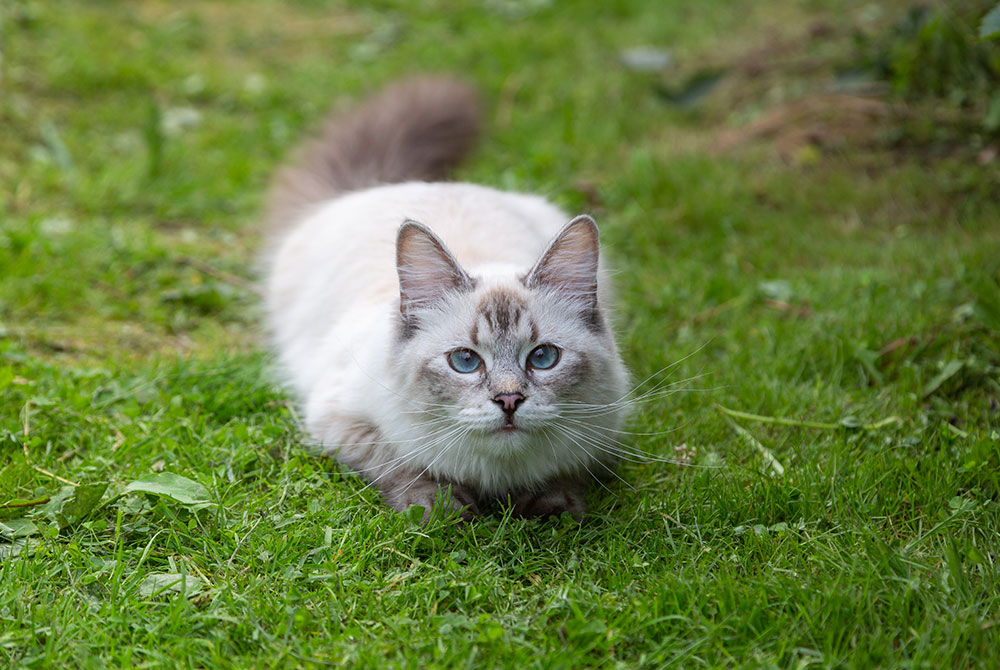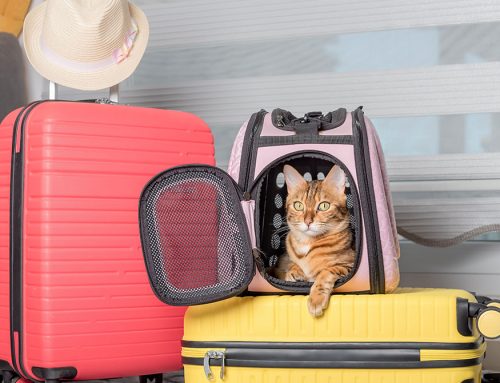Taking a kitty for boarding can be difficult. When we take free-spirited, and routine oriented species like a cat and expect them to immediately settle in we are setting ourselves up for failure. Many people don’t realize that the adjustment process can be just as unfamiliar with a cat sitter that comes to your home. Some cats refuse to eat, refuse to come out of hiding and may even refuse to use their familiar litter box.
However, I feel with the more time I have under my belt, the better equipped I have become at understanding the differing needs of kitties. Of the several hundred cats I have boarded so far, it has been my observation that MOST cats don’t eat much of note for about 36 hours (1 ½ days). There are definitely exceptions to this as I have had cats stroll out of a carrier and immediately look for the food bowl and litter box. Some cats are better adjusted than others, OR they have boarded with us several times and they know what to expect. For more reluctant kitties, I double down my efforts to NOT pester them. I am respectful of their desire for space which generally means they settle faster. The Kitty Kasas are perfect cave-like cubes they can lay in to better observe their new environment. I have been known to use cameras to ensure they are indeed venturing out and often I get the alerts at 2:00 a.m. I employ the Fear Free methodologies I brush up on each year when I re-certify.
Most of the feeding instructions I get are to leave dry food out all the time with often a little wet at different times during the day. Some cats don’t have the self-discipline (who really DOES?) and need to be fed specific amounts at designated times, but they seem to be in the minority. I find that if they are slower to eat the first day or so, they often make up the ground the following few days.
When a new kitty checks in, I always put their requested food down in front of them immediately upon arrival. Every day they are here I monitor if they ate and drank, as well as their litter box use. Those milestones are important to me and something I look for when I am assessing how they are doing.
So what if 36 hours have passed and they still aren’t eating? I have a big bag of tricks I’ve developed over time! I have several different kinds of wet food, baby food, and enticing snacks to help us encourage your cat to eat. I even have special snacks for cats with urinary issues so that we don’t mess with their urine Ph and get them into trouble. It’s important to get them eating SOMETHING initially. Once you “prime the pump” so to speak, they tend to go back to eating their regular diet and get back into their familiar groove.
My goal is to make sure I help each cat adjust to their new surroundings, and what works is different for each individual cat. This means I sometimes move a kitty or change their bedding/litter box/bowl offering. You are paying me for my experience and expertise in taking care of your beloved cat. Making different decisions for each cat is simply part of my service. You are also paying me to decide what is normal and what needs medical intervention. I take this responsibility VERY seriously and will always contact you if it seems your cat has a problem or just isn’t able to adjust to the cattery environment. I have found the percentage of cats who have trouble is a very minute number (less than 2%). The overwhelming majority of cats are stimulated by the layout and environment and settle in great. It is also extremely uncommon for the adjustment period to shrink substantially on subsequent visits.
All of this said, if you have extreme concerns, let’s chat more. I will never take a cat that I feel I’m not equipped to care for. On a rare occasion, I’ve done a trial run to bring peace of mind to an owner who had a previous poor experience.







Leave A Comment